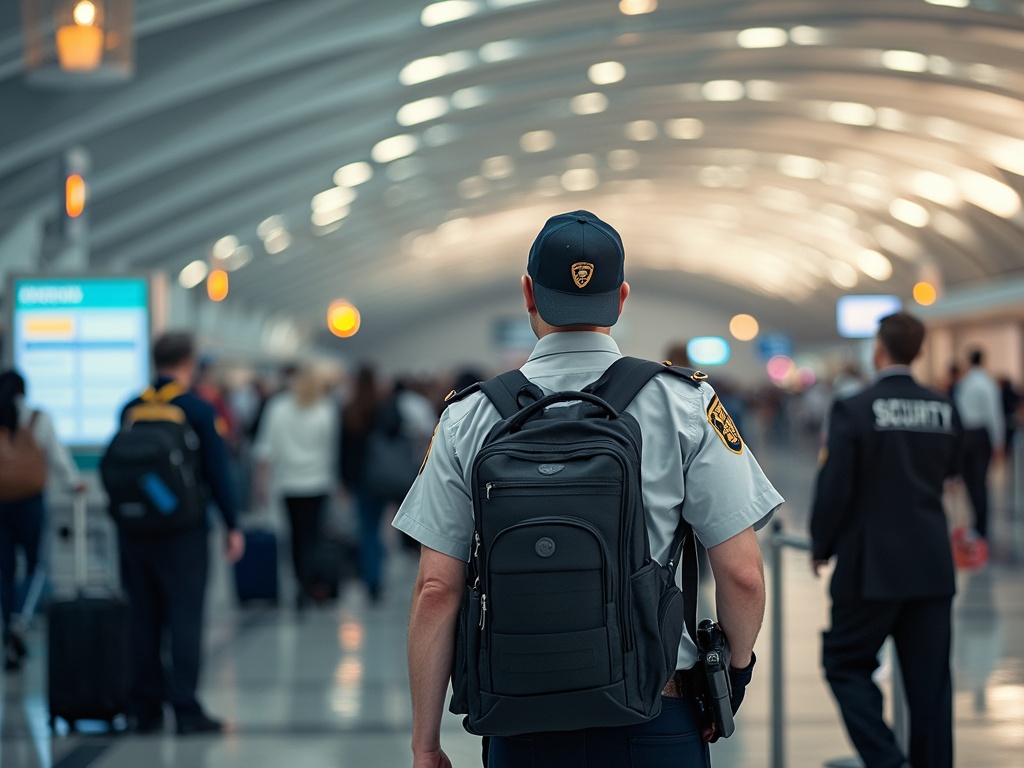Airport security operates as a sophisticated multilayered defense system, backed by striking TSA statistics from 2023 – including 300 security breach attempts and 6,737 intercepted firearms. Behind the security barriers, skilled behavior detection specialists implement advanced screening protocols, while frequent flyers increasingly opt for premium programs like CLEAR and Global Entry to streamline their checkpoint experience.
Key Takeaways:
- Security violations peak during high-traffic periods, resulting in 200 incidents at passenger exit locations and successful arrests in 85% of cases
- Security personnel discovered that 93% of caught firearms contained ammunition, intercepting roughly 18 weapons daily in late 2023
- A significant majority of Americans (79%) support comprehensive security measures over faster processing
- Premium security memberships provide different access levels, with costs spanning from $70 for TSA PreCheck to $179 per year for CLEAR
Security teams target specific prohibited items including:
- Liquids exceeding 3.4 ounces
- Electronics with non-functioning batteries
- Powder materials over 12 ounces in quantity
The Hidden Numbers Behind Airport Security Breaches
Security Bypass Patterns
Recent TSA data reveals disturbing trends in airport security breaches. Since March 2023, over 300 individuals have attempted to bypass security checkpoints, with 200 incidents specifically targeting passenger exit points. The most concerning statistic shows 80 cases of travelers trying to dodge TSA podiums entirely.
Enforcement and Notable Cases
The TSA's enforcement response has been swift, with an 85% arrest rate for podium violations. Major airlines haven't been immune to these security challenges. Delta and American Airlines faced significant scrutiny after unauthorized passengers managed to board aircraft through employee-only access points. I've found these breaches typically occur during peak travel times when security personnel are most stretched. Common tactics include tailgating behind authorized personnel and exploiting emergency exits. Security officials maintain strict protocols but determined individuals continue finding creative ways to test the system's vulnerabilities.

Record-Breaking Firearm Interceptions at U.S. Airports
Alarming Statistics and Penalties
Airport security intercepted an unprecedented 6,737 firearms at TSA checkpoints in 2023, marking the highest number in TSA history. What's particularly concerning is that 93% of these weapons were loaded, creating serious safety risks. While the rate dropped slightly to 7.8 firearms per million passengers from 8.6 in 2022, the fourth quarter of 2023 still saw 18 firearms caught daily. These numbers highlight persistent security challenges despite strict regulations.
Passengers caught with firearms face severe consequences. TSA can impose civil penalties up to $15,000, and that's before factoring in potential criminal charges. Here's what triggers these penalties:
- Bringing loaded firearms through security
- Carrying unloaded firearms with accessible ammunition
- Having firearms in carry-on bags instead of checked luggage
- Failing to declare properly packed firearms
How the Wealthy Skip Airport Security Lines
Premium Security Programs
Money opens exclusive doors at airports, with tiered security programs offering different levels of convenience. TSA PreCheck's $70 fee grants domestic travelers five years of expedited screening, letting them keep shoes on and laptops packed. Global Entry adds international perks for $100, while CLEAR's $179 annual membership uses biometric scanning to bypass document checks entirely.
Here's what each program delivers:
- TSA PreCheck: Separate lines, no removal of light jackets or shoes
- Global Entry: PreCheck benefits plus faster customs processing
- CLEAR: Front-of-line access, fingerprint and iris scanning verification
These programs mirror pre-9/11 convenience, but with enhanced security measures. While standard travelers wait in lengthy queues, subscribers breeze through dedicated lanes. I've observed wealthy travelers often stack these memberships, using CLEAR to reach PreCheck lines faster, creating the smoothest possible airport experience.
What Americans Really Think About Airport Security
Security Priorities and Wait Times
I've discovered that most Americans strongly support strict airport security measures, despite the extra hassle. Recent polling data reveals that 79% of travelers prefer thorough security checks over faster processing times, showing a clear preference for safety first.
Time management at security checkpoints has become a crucial part of travel planning. Here's what current data tells us about traveler behavior and opinions:
- 45% of passengers arrive more than 90 minutes before their flight, indicating heightened awareness of security processing times
- Bomb-sniffing dogs receive the highest effectiveness ratings from travelers
- X-ray scanners and body scanning equipment rank second in perceived effectiveness
- Fast-track security programs, while growing in popularity, face mixed reviews with price being the main concern
The data paints a clear picture – Americans support comprehensive security screening but want efficient processes. Paid fast-track programs like TSA PreCheck have gained traction as a solution, though some travelers question whether security should have a “premium” tier.
I've found that travelers rate certain security measures as more effective than others. Dogs specifically trained to detect explosives consistently receive top marks from the public, followed by technological screening methods. This suggests that visible security measures tend to inspire more confidence than behind-the-scenes procedures.
Security Evolution Since 9/11
Early Security Transformations
The Transportation Security Administration emerged in November 2001 as a direct response to the September 11 attacks. This marked a complete shift from private security contractors to federal oversight at airports nationwide. Within months, air marshals became a permanent fixture on domestic flights, though their exact numbers remain classified.
Technology and Screening Advances
Security screening has transformed dramatically over two decades. The most notable changes include:
- Mandatory shoe removal and x-ray scanning, implemented after Richard Reid's failed shoe bomb attempt in December 2001
- Full-body scanners introduced in 2010, using millimeter wave technology to detect hidden objects
- The Secure Flight passenger vetting program, which pre-screens travelers against watch lists before they receive boarding passes
- Enhanced explosives detection systems for checked baggage
- Advanced checkpoint x-ray machines for carry-on items
I've found these changes have significantly increased average screening times, but they've also proven effective. TSA data shows they intercept thousands of prohibited items monthly, including firearms and explosive components. While some travelers see these measures as intrusive, they represent essential layers in modern aviation security. The current system balances passenger privacy with thorough screening methods, though it continues to adapt as new threats emerge. These procedures might seem excessive to frequent flyers, but they're carefully calculated responses to specific security incidents.

Tips for Navigating Airport Security
Security Screening Essentials
I've discovered that airport security checkpoints focus heavily on specific areas where travelers often attempt bypasses. The side pockets of carry-ons and laptop bags rank as prime spots for hidden items. Most passengers don't realize that PreCheck eligibility extends beyond frequent flyers – any U.S. citizen without criminal history can apply.
Behind-the-Scenes Security Measures
Random screenings aren't actually random. Security uses behavior detection officers to select passengers based on specific indicators. Here are key items that trigger additional screening:
- Liquids above 3.4 ounces
- Electronics with dead batteries
- Modified or damaged luggage
- Wrapped gifts
- Powder substances over 12 ounces
Airport employees face stricter screening than passengers, with daily checks and restricted zone protocols. Security staff monitor specific behaviors rather than profiles, focusing on physical cues and timing patterns rather than demographics.

Sources:
CBS News – “TSA airport security evasion attempts”
Transportation Security Administration (TSA) – “TSA detects 6,737 firearms at airport security checkpoints in 2023”
CBS News – “Airport security screening rich famous bypass queues”
YouGov – “Airport security: Despite inconvenience, most Americans prioritize safety”
Philadelphia International Airport (PHL) – “Security Evolution”





